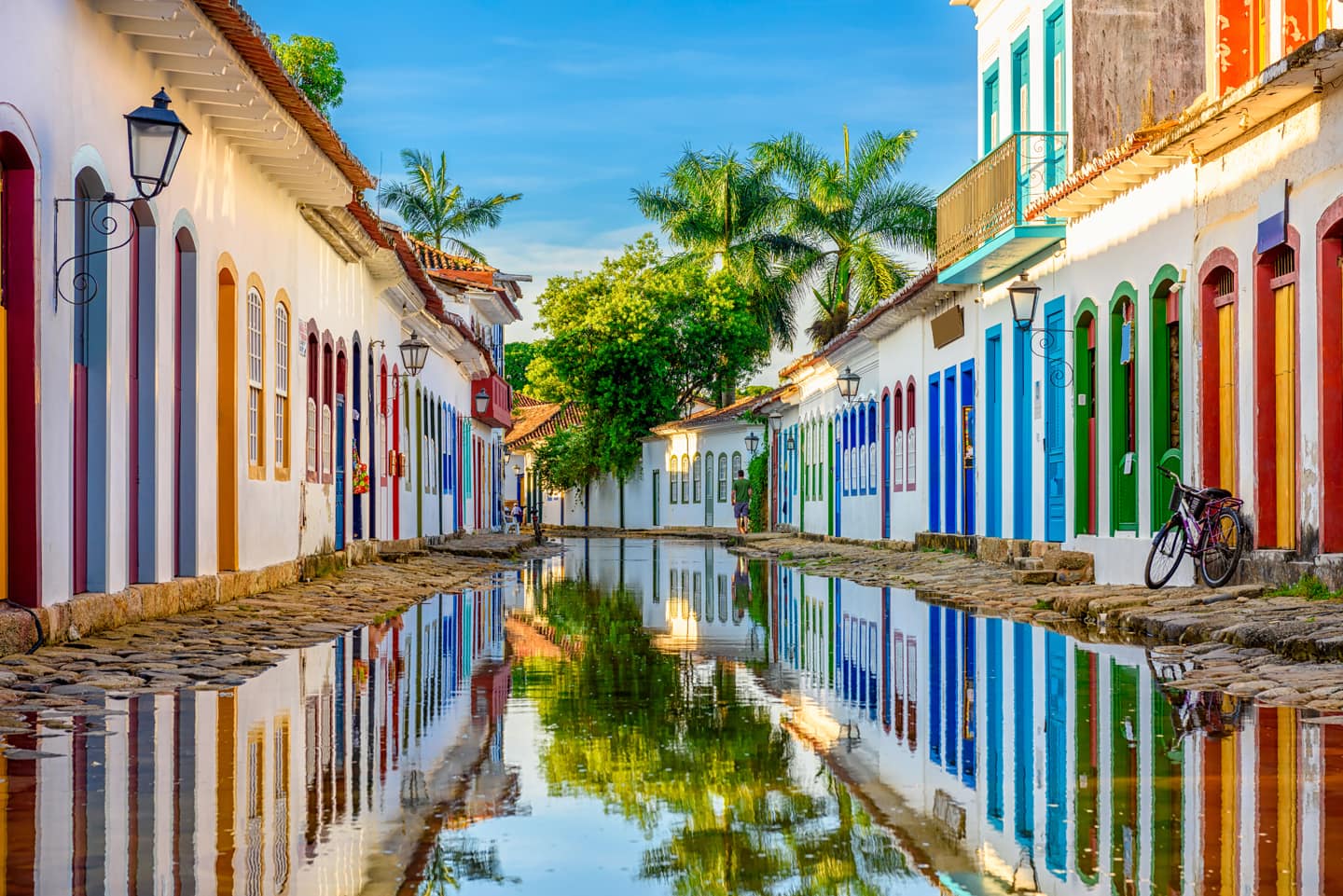The town is located on the Bay of Ilha Grande, which is dotted with many tropical islands. Rising behind the town are tropical forests, mountains, and waterfalls. It is the southernmost and westernmost city in Rio de Janeiro state.
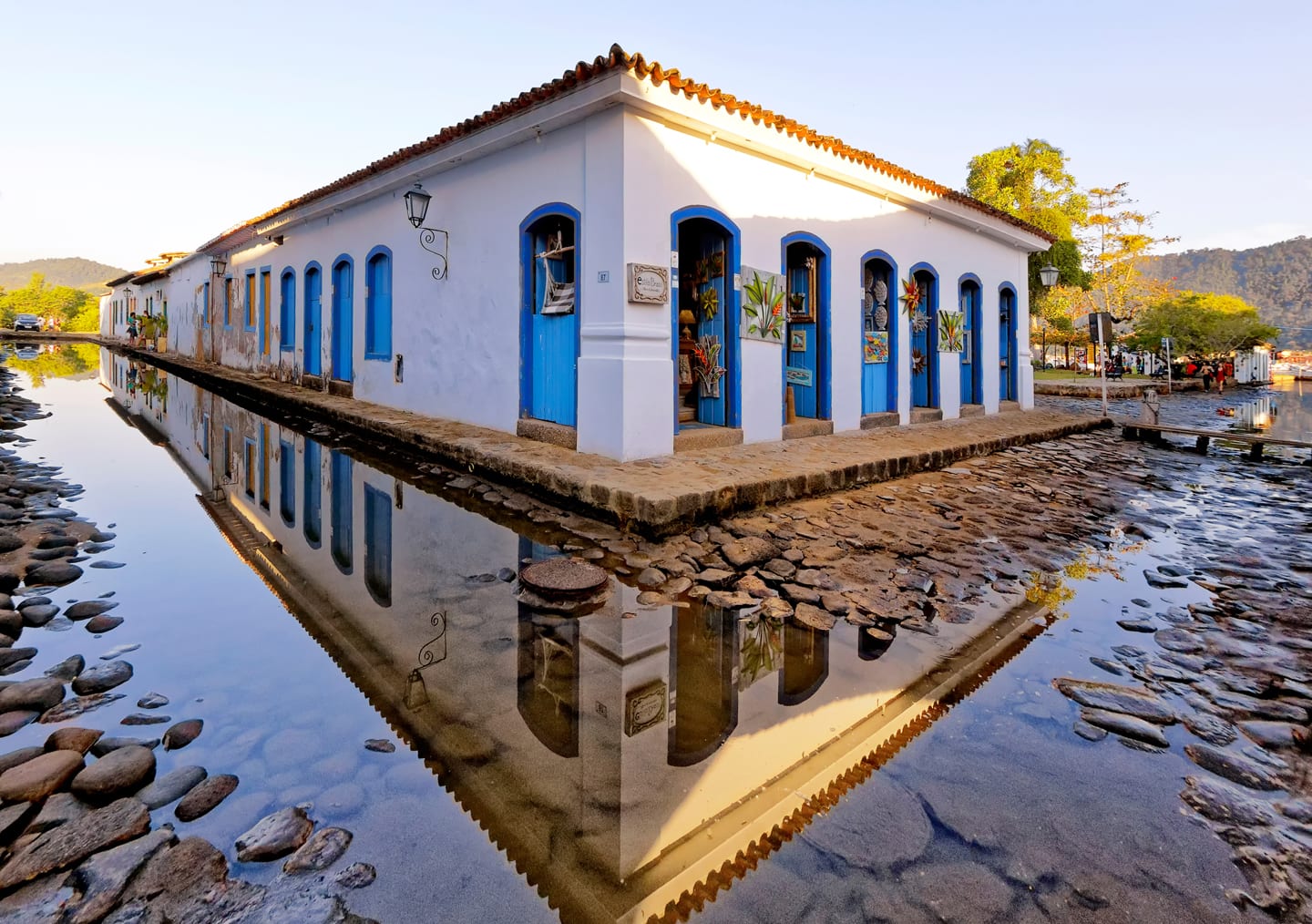
Paraty is listed by IPHAN as a National Historic Landmark. More than 80% of its territory is protected by conservation units:
• Cairuçu Environmental Protection Area, where the village of Trindade is located;
• Tamoios Ecological Station;
• Serra da Bocaina National Park;
• Baia de Paraty, Paraty Mirim & Saco do Mamanguá Environmental Protection Area;
• Juatinga Ecological Reserve.
Nearby is the Serra do Mar State Park of São Paulo. The municipality also inclu-des an indigenous village and an Afro-Brazilian quilombo settlement.
The village of Paraty was founded in 1597. It was established formally as a town by Portuguese colonists in 1667, in a region populated by the Guaianás Indians.
The Guaianás people who lived where the city now stands called the entire area “Paraty”. In the Tupi language “Paraty” means “river of fish”. Even today the Brazilian Mullet still come back to spawn in the rivers that spill into the Bay of Paraty. When the region was colonized by the Portuguese, they adopted the Guaianás name for their new town.
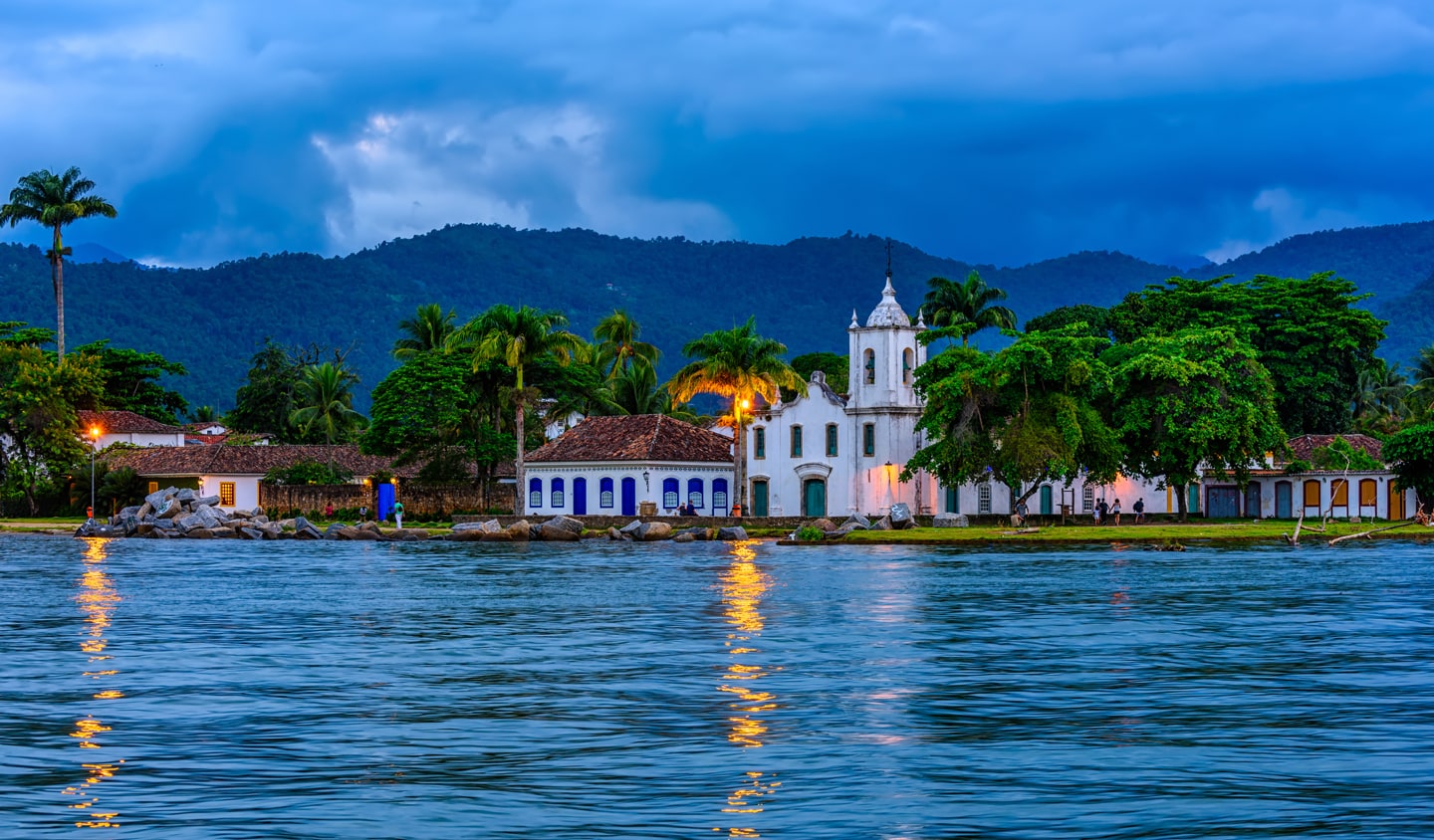
After the discovery of the world’s ri-chest gold mines in 1696 in the mountains of Minas Gerais, Paraty became an export port for gold to Rio de Janeiro and from there on to Portugal. The ensuing gold rush led to the construction of the “Gold Trail”, a 1200 kilometer road, paved in steep areas with large stones, which connected Paraty to Diamantina via Ouro Preto and Tiradentes. Not only was it used to transport gold to Paraty, but it was also used to convey supplies, miners and African slaves by mule train over the mountains to and from the gold mining areas. Two sections of the Gold Trail have been excavated near Paraty and are now a tourist destination for hiking.
The Gold Trail fell into disuse because of attacks on the gold laden ships bound for Rio de Janeiro by pirates who frequented the islands and coves of the Bay of Angra dos Reis. Eventually a safer overland route from Minas Gerais to Rio de Janeiro was created because of these pirate raids. Finally, the gold itself began to run out in the late 18th century, and Paraty declined.
The Gold Trail was submitted for inclusion on the World Heritage List in 2004.
The city’s economic activity revived as a port for a new boom, the coffee trade of the Paraiba do Sul River Valley in the early 19th century, until a railway along the valley created cheaper transport to the port of Rio de Janeiro. Another smaller revival came late in the 19th century with the production of cachaça, which is a sugarcane-derived spirit best known today as the basis for Brazil’s most famous cocktail, the caipirinha. The name “Paraty” in that period became synonymous
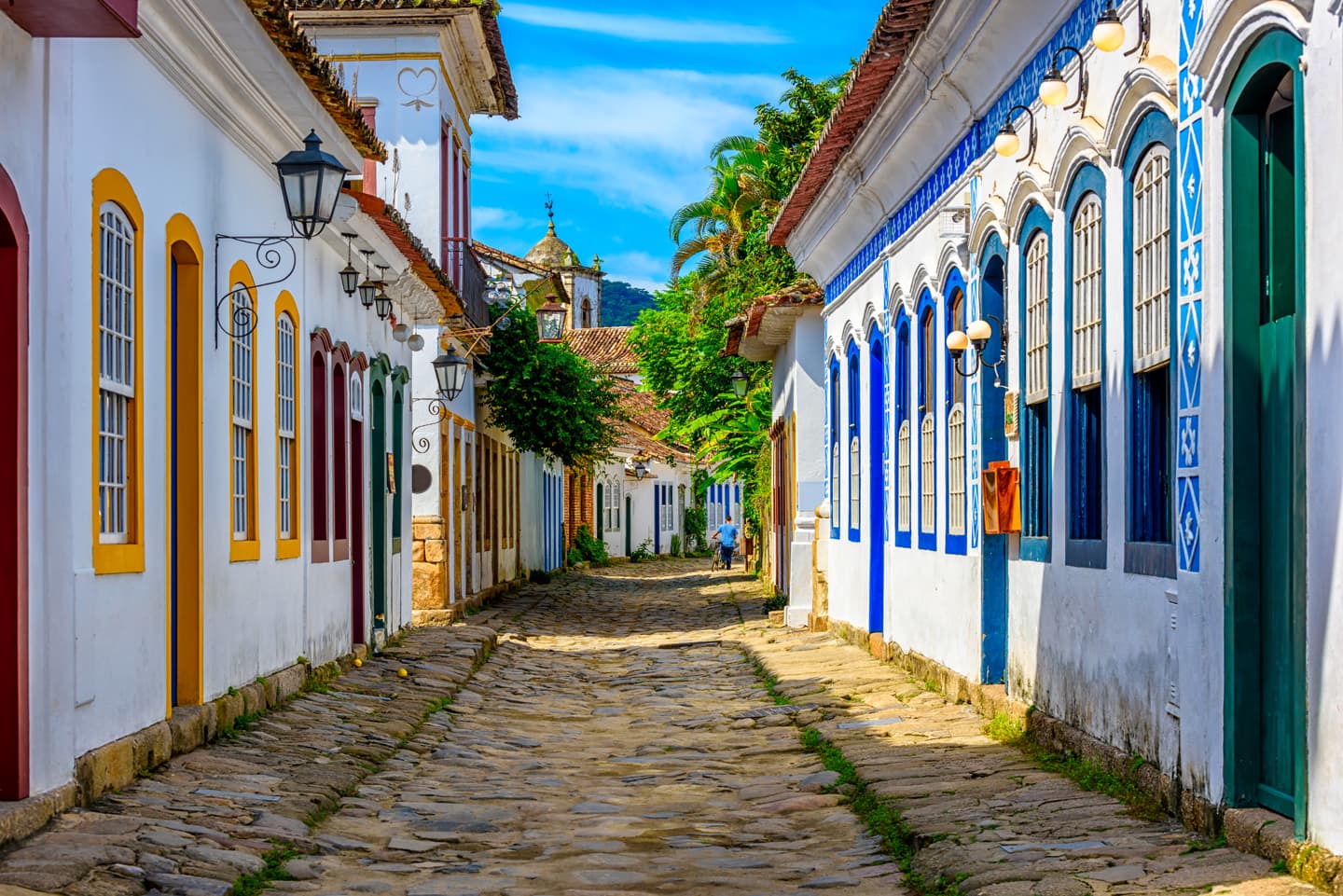
with cachaça. Since then, Paraty has been out of the mainstream, which is why it did not change for centuries, until a paved road was built from Rio de Janeiro to Santos, near São Paulo, in the 1970s. The city then began a new cycle of activity, which transformed a small, almost abandoned town living on very limited economic activity, mainly fishing and agriculture (bananas, manioc, sugarcane) into a tourism destination.
Paraty is known for the cobblestone-paved streets throughout the Historic Center District. No cars or trucks are allowed in this part of town, only foot traffic or bicycles. Motor vehicles are only allowed in the Historic District on Wednesdays for deliveries. Horses and carts are a very common sight in Paraty and are frequently used all around the city.
Paraty has been able to maintain many of its historic buildings. Much of the architecture of the city has not changed for 250 years or more.
There are four important historic baroque churches in Paraty:
• Chapel of Saint Rita is the oldest church in Paraty. It was completed in 1722. This was the church of the freed slaves and freeman, former slaves. It is currently home to the Museum of Sacred Art.
• Church of Nossa Senhora do Rosário & São Benedito was built and used by Paraty’s African slaves. It dates back to the year 1725. Every year in the first week of December the festivities of São Benedito are held in this church.
• Chapel of Nossa Senhora das Dores dates back to 1800. It was used mostly by the rich women of society. Construction was overseen by the presiding priest, Father Antonio Xavier da Silva Braga.
• Church of Nossa Senhora dos Remédios is the largest church in Paraty. It takes up over an entire city block. Its construction began in 1646 when a woman named Maria Jácome de Melo donated the land for the construction of the village of Paraty, however she demanded two conditions: The first was the building of a chapel dedicated to Nossa Senhora dos Remédios and the second was that no one would harm the Indians that lived in the area at that time. The church was completed in 1873.
There are two colonial forts in Paraty:
• Forte Defensor was built in 1703 and outfitted with six cannons for the protection of the city’s important commercial warehouses. With the aforementioned economic decline of the region, it was in ruins until 1822, when it was reconstructed and dedicated to Emperor Dom Pedro I. Some historians believe that it was at the fort that the first nucleus of the town began, in that the area around the fort is still referred to as the “Old Village.”
Forte Defensor is one of seven fortifications that were built around the harbor of Paraty, two of them being in the city. All of the others that were constructed outside the city are now only ruins.
• Forte Patitiba also known as the Old Jail, is a smallish structure which for a while was also used as a prison. It is found in the plaza of Santa Rita, next to the church of same name. Constructed in the beginning of the 18th century, the building was part of a larger Forte Patitiba, the other blockhouse built in the city for defense of the harbor. In the 19th century it was decommissioned and today it houses the local public library.
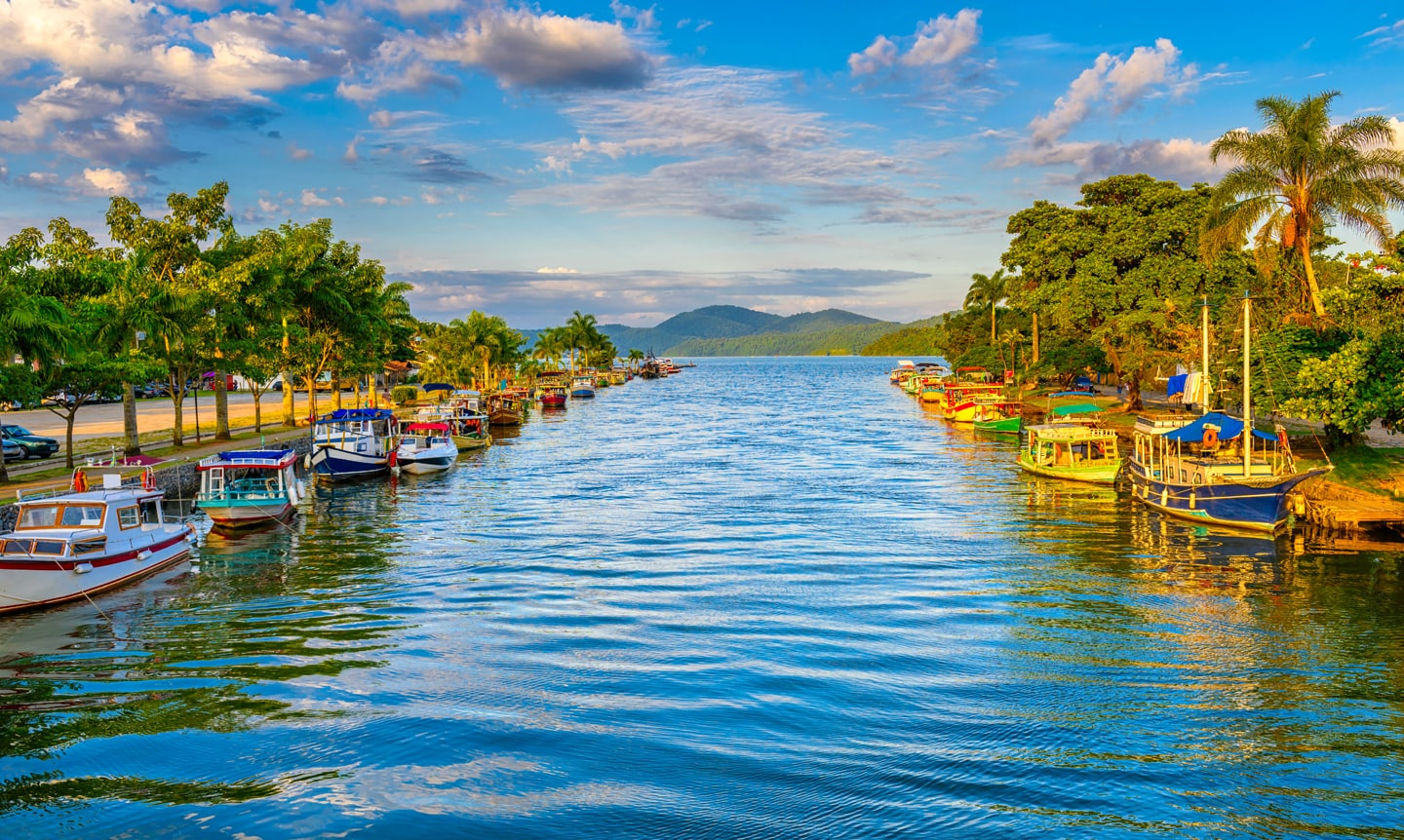
There are also many colorful colonial houses, many of which have been transformed into shops, pousadas (Brazilian bed-and-breakfasts), restaurants and bars.
Once a month when there is a full moon and the tide is high, seawater rises above its normal levels and pours into the Historic Center District through special openings in the seawalls that separate the city from the harbor. The streets are only flooded for a short time until the tide recedes.
There are many musical and cultural events, the most prominent of which is the FLIP – Festa Literaria Internacional de Paraty (International Literary Festival of Paraty). The town is also known for its local festivals on Catholic holy dates, such as the Feast of the Holy Ghost.
The Paraty House of Culture occupies an historic house originally built in 1754 which opened to the public in 2004 and holds a permanent exhibition on local history and culture. In the Salon of Indigenous Culture, visitors can see the “carpets” made of colored sawdust and flower petals used during the festival of Corpus Christi in June. The largest is almost 92 square feet. The “carpet” is protected by glass so that visitors walk on it as they enter.
Source: wikipedia


